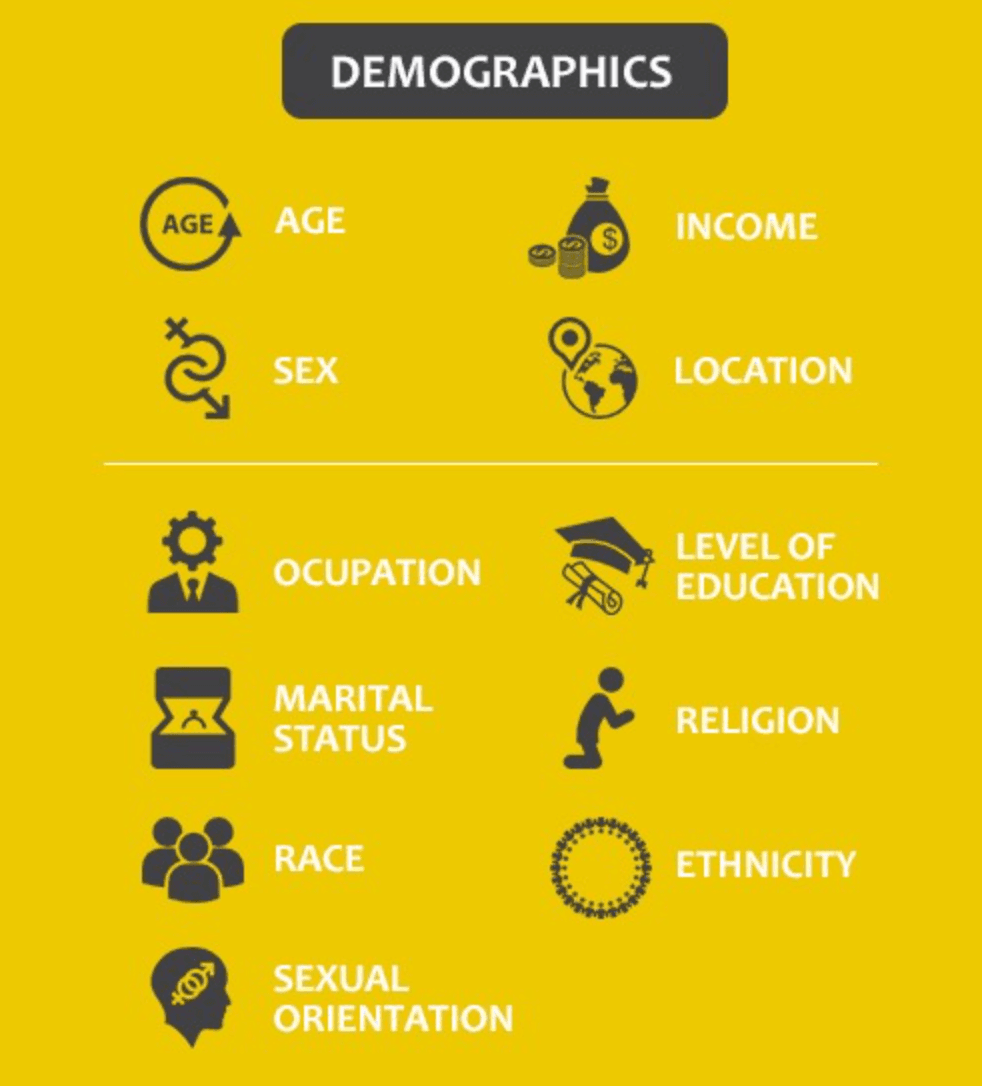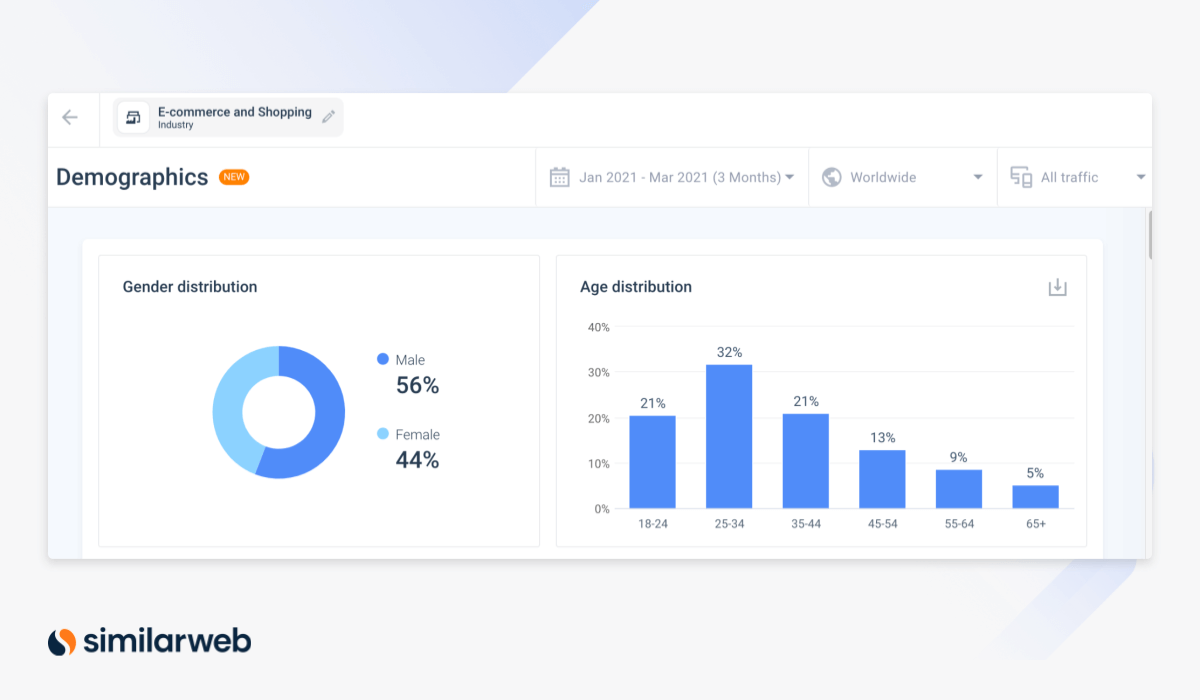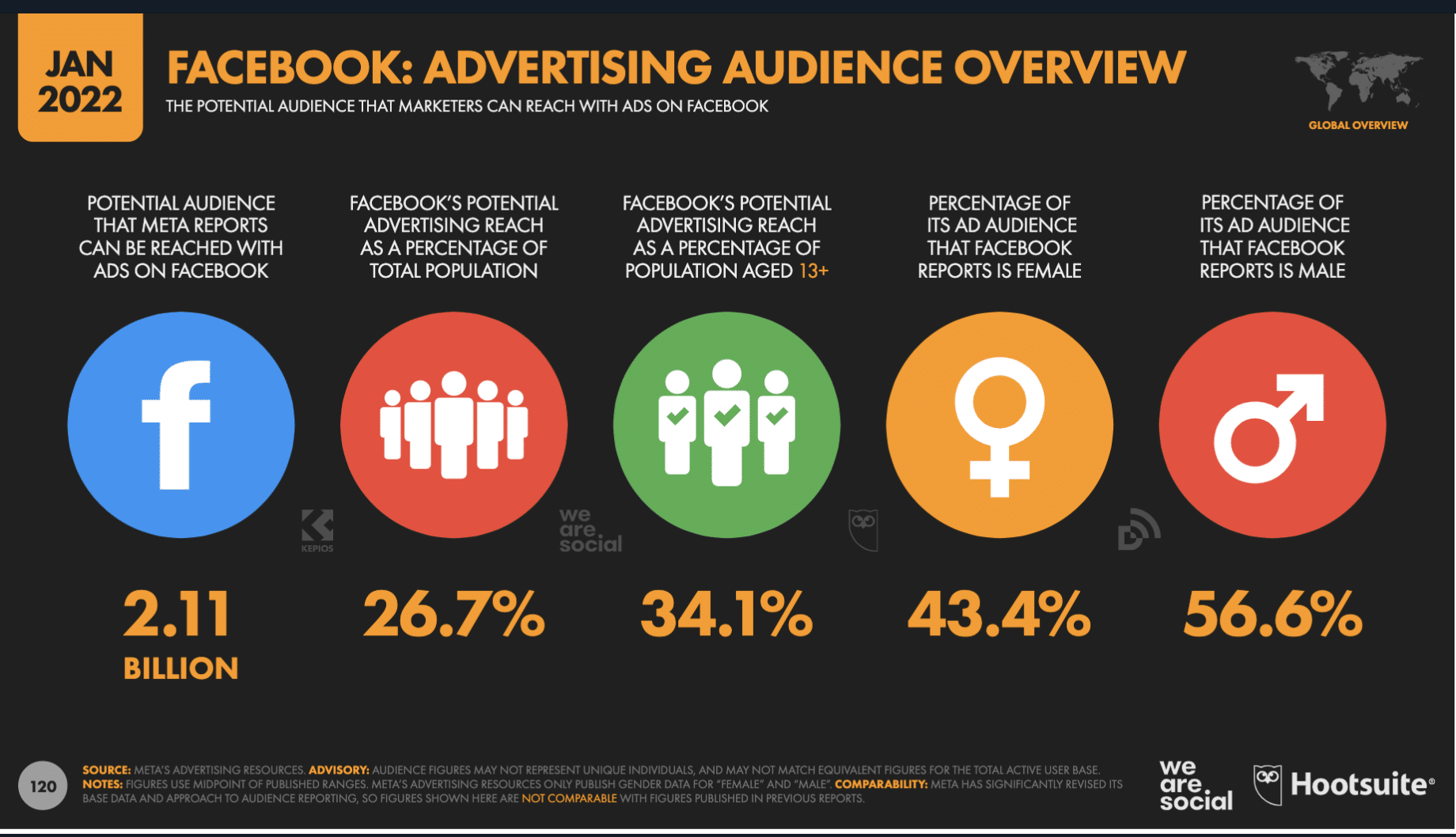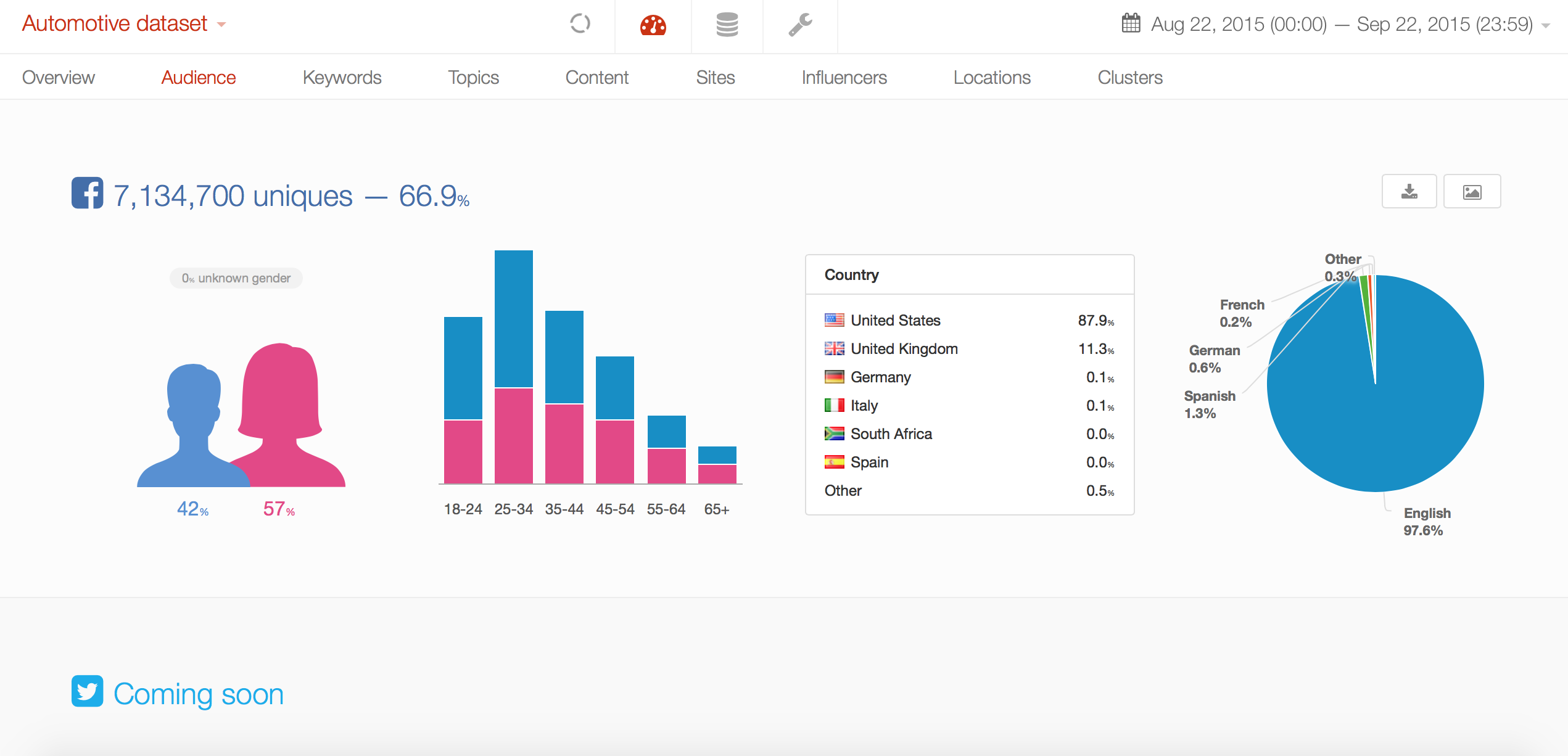Audience Demographics
Audience demographics refers to the characteristics and attributes of the target audience or customer base. It includes the age, gender, location, income level, and interests of the audience.
Understanding audience demographics is crucial for businesses as it helps them tailor their marketing strategies and messages to effectively reach and engage their target audience. By analyzing audience demographics, businesses can identify the most effective channels, platforms, and content formats to reach their target audience.
Furthermore, understanding audience demographics allows businesses to personalize their marketing efforts and create more targeted and relevant content, leading to higher engagement, conversion rates, and customer loyalty. In today’s competitive market, knowing your audience demographics is essential for businesses to stay ahead and thrive. This article explores the importance of audience demographics and provides insights on how to effectively analyze and leverage this information to drive business success.
Why Audience Demographics Matter
Understanding audience demographics is crucial for any business or brand. It provides valuable insights into the characteristics, preferences, and behavior of your target audience, enabling you to tailor your marketing strategies and better connect with your customers.
Understanding your target market is essential for effective marketing strategies. By analyzing audience demographics, you gain valuable insights that can help tailor your marketing efforts and reach the right audience. Let’s explore why audience demographics matter and how they can positively impact your business.
Understanding Your Target Market
Understanding your target market allows you to create focused and personalized marketing campaigns. By analyzing audience demographics, such as age, gender, location, and interests, you gain a better understanding of your potential customers. This insight helps you identify the specific needs, desires, and pain points of your target audience.
Knowing your target market enables you to:
- Develop products and services that meet their specific needs.
- Create relevant and impactful marketing messages.
- Identify the most effective marketing channels to reach them.
- Allocate your marketing budget wisely and maximize your ROI.
For example, if you discover that your target audience consists primarily of young adults between the ages of 18-24, you can tailor your marketing messages and content to resonate with this age group. You can use trendy language, modern visuals, and social media platforms that they are more likely to engage with.
Tailoring Your Marketing Strategies
Once you have a clear understanding of your target market, you can tailor your marketing strategies to effectively reach and engage with them. Here’s how:
- Create targeted content: Customize your blog posts, social media updates, and emails to address the specific interests and problems of your target audience. By providing valuable and relevant content, you establish yourself as an authoritative figure in your industry and build trust with your audience.
- Choose the right marketing channels: Different demographic groups prefer different communication channels. By identifying the preferred channels of your audience, you can prioritize your marketing efforts and ensure your message reaches them effectively. For instance, if your target market consists of professionals, LinkedIn and industry-specific events might be more suitable channels to engage with them.
- Adjust your tone and messaging: Depending on your target audience, the tone and language you use in your marketing materials can vary. For younger audiences, a more casual and conversational tone might be appropriate, whereas a more formal tone might be preferred by older and professional audiences.
- Use data-driven insights: By tracking and analyzing the response to your marketing campaigns, you can gather valuable data to refine your strategy further. Use tools like Google Analytics to evaluate metrics like website traffic, click-through rates, and conversions, which can help you make data-driven decisions and optimize your marketing efforts.
By tailoring your marketing strategies based on audience demographics, you can increase the effectiveness of your campaigns, improve customer engagement, and ultimately drive higher conversions and sales.

Credit: coschedule.com
Gathering Demographic Data
When it comes to understanding your audience, gathering demographic data is crucial. By collecting information about the characteristics of your target demographic, you can tailor your content and marketing strategies to meet their specific needs and preferences. In this section, we’ll explore two effective methods for gathering demographic data: using surveys and questionnaires, and leveraging social media insights.
Using Surveys And Questionnaires
Surveys and questionnaires are valuable tools for obtaining demographic insights. By asking targeted questions, you can gather data about your audience’s age, gender, location, education level, occupation, and more. These questionnaires can be distributed via email, on your website, or through social media platforms. To ensure a high response rate, keep your surveys concise and easy to complete. Offering incentives like discounts or exclusive content can also encourage participation.
Leveraging Social Media Insights
Social media platforms provide a wealth of data about your audience’s demographics. By examining the analytics provided by platforms like Facebook, Twitter, and Instagram, you can gain valuable insights into your audience’s age, gender, location, interests, and online behaviors. Take advantage of the demographic reports provided by these platforms to inform your content strategy and target your advertising campaigns more effectively. Additionally, monitor social media conversations and engage with your followers to gain deeper insights into their preferences and needs.
Analyzing Demographic Information
Understanding your audience is crucial for any business looking to create targeted marketing campaigns. Analyzing demographic information provides valuable insights into who your audience is, helping you tailor your content to their preferences.
Identifying Key Demographic Factors
Identifying the key demographic factors that make up your audience is the first step in analyzing demographic information. These factors can include age, gender, location, income level, education level, and more. By understanding these factors, you can gain a deeper understanding of your audience’s needs, interests, and behaviors, allowing you to create relevant and engaging content.
Segmenting Your Audience
Segmenting your audience is a crucial strategy to ensure your content resonates with your target market. By dividing your audience into smaller, more specific groups based on shared characteristics, you can create personalized content that speaks directly to their needs and interests. Segmenting your audience can be done based on various demographic factors, such as age, gender, or location. This targeted approach allows you to deliver the right message to the right people at the right time, maximizing the impact of your content.
Here’s an example table illustrating how you can segment your audience based on age and gender:
| Male | Female | |
|---|---|---|
| 18-24 | Segment A | Segment B |
| 25-34 | Segment C | Segment D |
| 35-44 | Segment E | Segment F |
Segmenting your audience allows you to tailor your content to the unique needs, preferences, and behaviors of each segment. This approach not only enhances the overall user experience but also improves the effectiveness of your marketing efforts.
By analyzing demographic information and identifying key demographic factors, you can gain a deeper understanding of your audience and create content that resonates with them. Segmenting your audience further allows you to personalize your content, increasing engagement and driving desired actions. Take the time to analyze your audience’s demographics, and you’ll be well-positioned to deliver targeted, impactful content that fuels your business’s success.

Credit: www.similarweb.com
Implications Of Audience Demographics
Understanding the demographics of your audience can have significant implications for your content strategy. By analyzing data on factors such as age, gender, location, and interests, you can create personalized content, make informed decisions, and ultimately enhance your engagement with your target audience.
Creating Personalized Content
Personalization is key to capturing and retaining audience attention. When you have insight into the demographics of your audience, you can tailor your content to their specific needs and interests. Bold
- Create content that speaks directly to their age group, using language and references that resonate with them.
- Offer insights and solutions that cater to their specific gender or location, ensuring your content is relatable and inclusive.
- Showcase products or services that align with their interests and preferences, increasing the likelihood of conversions and purchases.
By personalizing your content, you can forge deeper connections with your audience, foster trust, and establish yourself as a relevant and reliable source of information or products. Moreover, personalized content has been shown to improve user engagement and increase the likelihood of social sharing, further expanding your reach and impact.
Making Informed Decisions
Audience demographics provide valuable insights that go beyond content creation. They can inform your overall marketing and business strategy, guiding you in making informed decisions that align with your target audience’s preferences and behaviors. Bold
- Allocate advertising budgets to channels that are popular among your target demographic.
- Develop products or services that cater to the specific needs and desires of your audience.
- Identify potential partnerships or collaborations that would resonate with your target audience.
By leveraging audience demographic data, you can optimize your resources and initiatives, increasing the effectiveness of your marketing efforts and generating higher returns on investment. Rather than relying on assumptions or guesswork, you can base your decisions on factual information, giving you a competitive edge in your industry.
In conclusion, understanding and leveraging audience demographics can have a significant impact on your content strategy and business as a whole. By creating personalized content and making informed decisions, you can enhance your engagement with your target audience, boost your brand’s visibility, and ultimately drive successful outcomes. Start harnessing the power of audience demographics to unlock new opportunities and achieve your marketing goals.
Future Trends In Audience Demographics
Future trends in audience demographics are shifting, reflecting changing preferences and behaviors. Understanding these shifts is crucial for businesses to target and engage their audiences effectively. Industry experts predict an increasing focus on personalized and diverse marketing strategies to cater to the evolving needs and interests of different demographic segments.
The Impact Of Generational Shifts
In today’s ever-changing world, future trends in audience demographics are crucial for businesses to understand. As time goes on, the makeup of various demographic groups shifts, presenting new opportunities and challenges. One significant factor driving these changes is generational shifts. The preferences, behaviors, and values of different generations can significantly impact how businesses communicate and engage with their target audience. Let’s take a closer look at how generational shifts affect audience demographics. Generation Z, born between the mid-1990s and early 2010s, is currently coming of age and becoming an essential consumer group. They are known for their digital savviness, having grown up with technology at their fingertips. Gen Z craves personalized experiences and authenticity from brands. They appreciate brands that align with their values, such as social responsibility and sustainability. This generation prefers short yet impactful content formats like videos and microblogs and demands seamless digital experiences. When it comes to millennials, born between the early 1980s and late 1990s, they have already established their influence in the marketplace. They are highly connected through social media and consume content across various platforms. This generation values experiences and self-expression. Brands that create unique, shareable experiences with a focus on self-care and personal growth can resonate with millennials. While older generations like Gen X and baby boomers may not be as digitally focused, they still hold significant purchasing power. These generations tend to seek reliability and trust from brands. They value established brands with a long-standing reputation. Traditional marketing channels like television and print media might still be effective when targeting these audiences.Evolving Technology And Communication Channels
Technology and communication channels constantly evolve, significantly impacting audience demographics. New technologies like artificial intelligence, virtual reality, and voice assistants are revolutionizing the way people interact and access information. As businesses adapt to these technologies, they need to consider their impact on audience demographics. With the rise of AI-powered voice assistants like Amazon Alexa and Google Assistant, voice search is becoming increasingly popular. Optimizing content for voice search becomes essential, as users often use conversational language when interacting with these devices. This shift in search behavior affects how businesses tailor their content and keywords to target their audience effectively. Moreover, the widespread use of smartphones has changed how people consume content. Mobile devices are now the primary means of accessing the internet for many individuals, particularly younger generations. Mobile-responsive and mobile-first designs are crucial for businesses seeking to engage with their audience effectively. Social media platforms continue to dominate the digital landscape, with new platforms emerging regularly. Businesses must stay up-to-date with the latest trends and preferences within different social media platforms to reach their target audience successfully. Each platform has its unique demographics and communication style, and understanding these nuances is critical for effective engagement. In conclusion, future trends in audience demographics highlight the importance of adapting to changing generational shifts and the evolving technology and communication channels. By understanding these trends, businesses can optimize their marketing strategies to effectively engage with their target audience and stay ahead in the ever-competitive digital landscape.
Credit: blog.hootsuite.com
Frequently Asked Questions On Audience Demographics
What Are Audience Demographics?
Audience demographics refers to the characteristics of a particular group of people, such as their age, gender, location, income, and interests. Understanding these demographics helps businesses create targeted marketing strategies.
How Can Audience Demographics Influence Marketing Campaigns?
By knowing the audience demographics, businesses can tailor their marketing campaigns to reach the right people with the right message. It allows them to choose the appropriate marketing channels and create content that resonates with their target audience.
Why Is It Important To Analyze Audience Demographics?
Analyzing audience demographics helps businesses gain insights into their customers’ needs, preferences, and behavior. This information guides product development, marketing strategies, and helps businesses identify new opportunities to engage and connect with their target audience.
Conclusion
Understanding the demographics of your audience is crucial for effective marketing. By analyzing their age, gender, location, and interests, you can tailor your content to resonate with them. This deeper understanding helps in delivering personalized experiences that drive engagement and conversions.
By continuously monitoring and adapting your strategies to match the evolving demographics, you can stay ahead of the competition and build a strong connection with your target audience.




